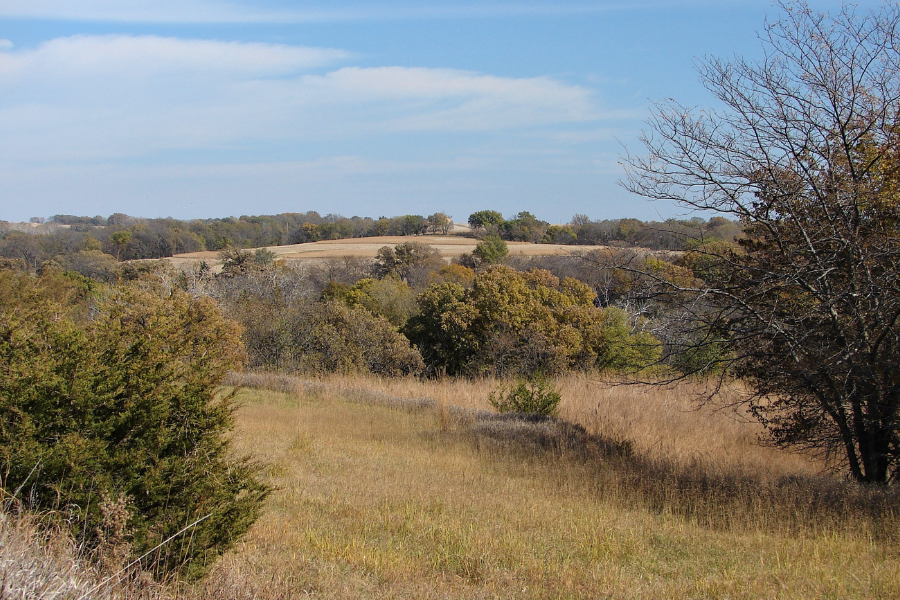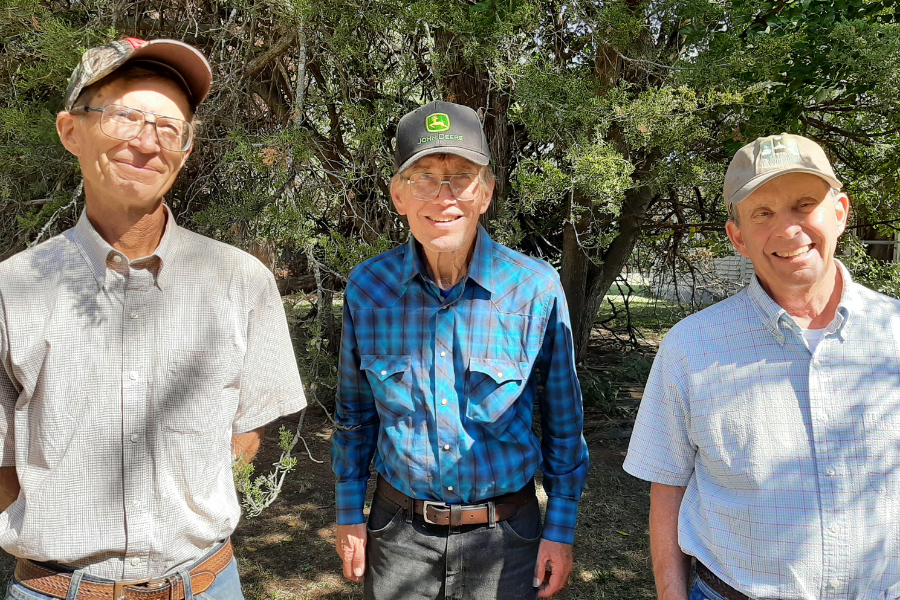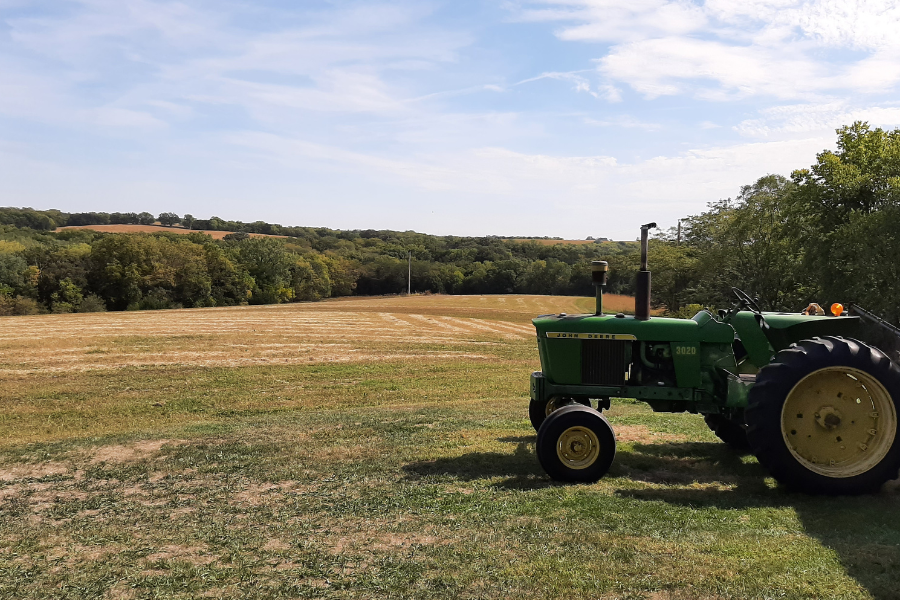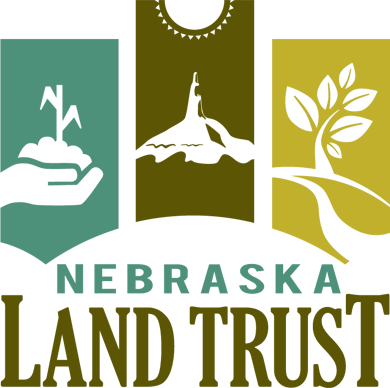Fedde Farm
Sarpy county
In the family for two generations, Fedde Farm is owned and operated by Dean and Wayne Fedde. Their organic farm lies on the northern border of Schramm State Park in southwestern Sarpy County. As the fastest growing county in the state, Dean and Wayne wanted to conserve not only their family’s legacy, but also a precious piece of agriculture in a rapidly urbanizing region. Read on to hear directly from Dean about why they chose an easement for their farm and the importance of easements to land conservation in Nebraska.



Conservation Easements Aid Agriculture
By: Dean Fedde
I am a lifelong Nebraskan with deeply planted roots in southwest Sarpy County. For nearly a century, my family has farmed in the Lower Platte Valley, an area with some of our states most fertile soils. For the communities in the Lower Platte Valley, agriculture has provided a window for everyone to view a scenic countryside filled with historic farmsteads, rolling fields of grain, and the diverse habitat needed to sustain the abundant wildlife of the region. But in Nebraska’s fastest growing county, agriculture is being squeezed out as farms are forever vanishing at an alarming rate. Unfortunately for my family, we experienced the consequences of being one of those farms.
My brother Wayne and I grew up on the farms of our grandparents John and Stella Deloske, and our uncle and aunt, Joe and Stella Buras. The two farms, located approximately seven miles south of Gretna, were only separated by Nebraska Highway 31.
My grandparents were Lithuanian immigrants who moved in 1932 from a small farm in South Omaha to this much larger 40-acre farm. Along with his family of three sons and three daughters, Grandpa Deloske farmed with horses growing corn, oats, and alfalfa to feed their cattle, hogs, goats, chickens, and geese. It was a family farm and we presumed that it would always stay in the family. However, in 1966, shortly after my grandfather passed away, an investor contacted a part of the family with an offer to buy the farm. Unknown to the rest of the family, the farm was sold. The house, barn, and outbuildings were bulldozed and burned. The land was broken into five parcels as rooftops replaced fields of corn, oats, and alfalfa. Agriculture no longer existed here as this family farm was forever gone.
On the 158-acre farm of our Uncle Joe and Aunt Stella Buras, we learned of conservation and perseverance as they worked diligently to not only protect the environment but to improve it. This farm defined their lives. Following the passing of Uncle Joe in 1982, Wayne and I vowed to not let this farm disappear like the farm of our grandparents. In 1993 we were able to purchase the farm from our Aunt Stel.
When we took over the farming operation we were committed to follow in their footsteps and respect the environment, just as they had. Today, we are a certified organic farm growing corn, soybeans, oats, winter wheat, and alfalfa. To my brother and I, these two farms were not just parcels of real estate to be bought and sold, they were a treasured part of us. We could not save our grandparent’s farm, but in 2010 we were offered the opportunity to forever protect the farm and legacy of our uncle and aunt with a permanent conservation easement with the Nebraska Land Trust.
I am sure that most Nebraskans are unaware of this conservation opportunity. Support is needed, but there have been parties who are supplying misinformation concerning permanent conservation easements, so I would like to provide the following verifiable information.
- Nationwide we are steadily losing agricultural land to development. Millions of acres have been lost in urban and rural sectors due to urban sprawl and expanding development. Nebraska is no exception. To preserve agricultural land, the United States United States Department of Agriculture (USDA) created the Agricultural Conservation Easement Program (ACEP). It is noteworthy that with bipartisan support in Congress, the 2018 Federal Farm Bill increased the monies available for the funding of permanent conservation easements from $250,000,000.00 per year to $450,000,000.00 per year.
- By accepting a permanent conservation easement, the owner does not relinquish ownership. There is no “Land Grab” when an easement is accepted. Control of the farm/ranch remains with the owner who continues to make all operating decisions such as participation in USDA farm programs, crops to plant, or when or where fences need to be built.
- Conservation easements do not freeze land valuations or real estate taxes. The valuations and real estate taxes assessed by Sarpy County on our farm have not been reduced because we have a permanent easement in place. Like every working farm in Sarpy County, we receive the “greenbelt” designation to relieve our tax burden, but in no other way do we receive any other considerations. If in the near future the Gretna city limits were extended to envelop our farm, the “greenbelt” taxation designation we receive would only be protected because we have a permanent conservation easement in place. “Greenbelt” is not permitted within city limits so it would be extremely difficult to remain a working farm without our easement.
Conservation easements can be a powerful asset for the farmers and ranchers of our state. Development pressures are certainly not limited to Sarpy County, but Sarpy County may prove to be a prime example of how to preserve agriculture through conservation easements. Now is a critical time as the pressures are growing as every agricultural acre in Sarpy County holds the potential for development. The option of a permanent conservation easement can protect a family farm/ranch for future generations to continue in agriculture. Once an unprotected farm has been broken by development, that land is altered forever and will never again return to agriculture.
